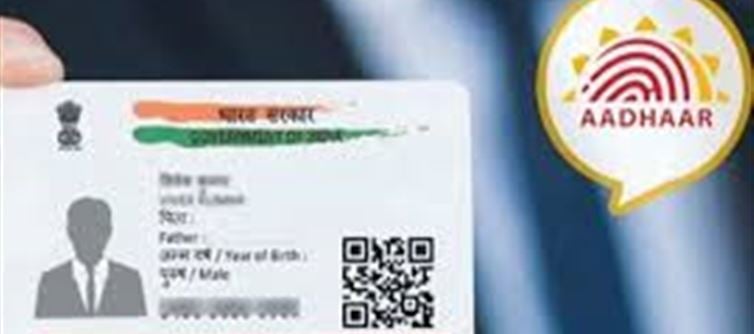
The Unique Identification Authority of india (UIDAI) has issued an important notification regarding Aadhaar cards that are more than 10 years old. If you haven't updated your Aadhaar details since it was issued, now is the time to act. Here’s everything you need to know about the new deadline and why updating your Aadhaar is necessary.
1. Why is Updating Aadhaar Important for 10-Year-Old Cards?
If your Aadhaar card was issued more than 10 years ago, and you haven’t made any updates or corrections since then, it’s time to review and update your card. UIDAI has emphasized that over time, there can be changes in personal details like address, name, or even biometric data (fingerprints or iris scans), which could impact the accuracy of the Aadhaar data.
· Biometric and Demographic Changes: Over a decade, biometric details (like fingerprints) might become less readable, or there could be changes in your address or other personal information.
· Identity Verification: Aadhaar is increasingly used for various government schemes, banking services, and KYC (Know Your Customer) procedures. Outdated details could cause delays or rejections in essential services.
2. The New Deadline: What You Need to Know
UIDAI has set a new deadline for updating Aadhaar cards for holders whose cards are over 10 years old. Although the exact date for the deadline has not been clearly mentioned, UIDAI has urged individuals to check and update their Aadhaar before December 31, 2025. After this date, the Aadhaar card may become invalid or may be flagged for review, causing inconvenience when used for official purposes.
3. Who Needs to Update Their Aadhaar?
If you fall into the following categories, you should check your Aadhaar card for updates:
· Aadhaar Card issued more than 10 years ago: Individuals who received their Aadhaar cards before 2015.
· No Updates Made Since Issuance: If you have never updated or corrected your Aadhaar details after it was first issued.
· Children’s Aadhaar: For those who received an Aadhaar card as children and have now reached adulthood, their biometric data needs updating to reflect growth and development.
4. How to Update Your Aadhaar?
The process to update your Aadhaar is easy and accessible. Here are the steps you need to follow:
· Online Update: Visit the official UIDAI website and log in using your Aadhaar number. Follow the prompts to update personal details such as address, name, or contact information. For biometric updates, you may be required to visit an Aadhaar enrollment center.
· Visit Enrollment Centers: If you need to update biometric data or make corrections, you’ll have to visit an Aadhaar enrollment center. These centers are spread across the country, and you can locate the nearest one through the uidai website.
· Documents Required: Ensure that you have the necessary proof of identity or address documents (e.g., passport, utility bills, etc.) to validate any changes you make.
5. Consequences of Not Updating Aadhaar
Failing to update your Aadhaar card can have serious consequences, especially with increasing dependence on it for official and financial services:
· Service Denial: Your Aadhaar might be rejected when you use it for KYC, banking, or government-related services.
· Delays in Subsidy or Welfare Schemes: Many government schemes rely on Aadhaar for eligibility and authentication. If your details are outdated, it may delay or prevent the disbursement of subsidies, pensions, and welfare schemes.
· Issues with Identity Verification: As Aadhaar becomes the primary identity verification tool, incorrect or outdated information could lead to issues when traveling, applying for loans, or even opening new bank accounts.
6. Key Features of Aadhaar Update
Updating your Aadhaar has the following benefits:
· Accurate Data: Ensures that your personal information and biometric details are up-to-date, making identity verification smoother and more accurate.
· Streamlined Access to Services: You’ll be able to access government schemes, financial services, and other facilities without any hiccups.
· No More Hassle at Enrollment Centers: Updating your Aadhaar data ensures that you don’t face unnecessary delays or rejections due to outdated information.
7. FAQs on Aadhaar Update for 10-Year-Old Cardholders
· Q: Is updating my Aadhaar mandatory?
o A: Yes, especially if your Aadhaar is more than 10 years old and has not been updated recently. It is essential to keep your Aadhaar data current to avoid disruptions in services.
· Q: How do I know if my Aadhaar is 10 years old?
o A: You can check the date of issuance on your Aadhaar card itself or log into the uidai website to verify the status.
· Q: Can I update my Aadhaar online?
o A: Basic demographic changes like address and mobile number can be updated online, but for biometric updates (fingerprints, iris scans), you need to visit an Aadhaar center.
· Q: How long does the update process take?
o A: Updates typically take a few days to reflect in the system, but biometric updates may take a little longer, depending on the center’s availability.
8. Conclusion: Don’t Delay, Update Now
If you have a 10-year-old Aadhaar card, it’s crucial to update your details before the deadline to avoid any service disruptions. With Aadhaar becoming more essential in daily life and government schemes, keeping it current will ensure you can continue enjoying seamless access to all services.
Disclaimer:
The views and opinions expressed in this article are those of the author and do not necessarily reflect the official policy or position of any agency, organization, employer, or company. All information provided is for general informational purposes only. While every effort has been made to ensure accuracy, we make no representations or warranties of any kind, express or implied, about the completeness, reliability, or suitability of the information contained herein. Readers are advised to verify facts and seek professional advice where necessary. Any reliance placed on such information is strictly at the reader’s own risk..jpg)




 click and follow Indiaherald WhatsApp channel
click and follow Indiaherald WhatsApp channel